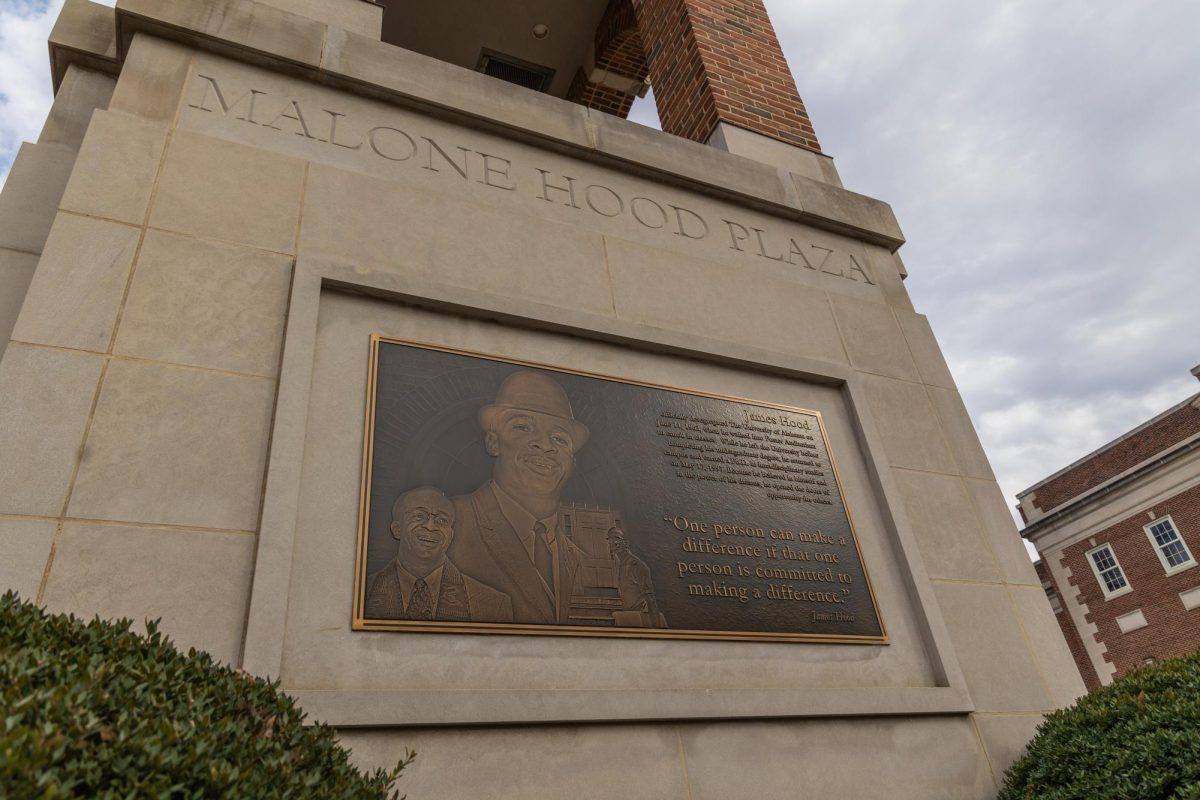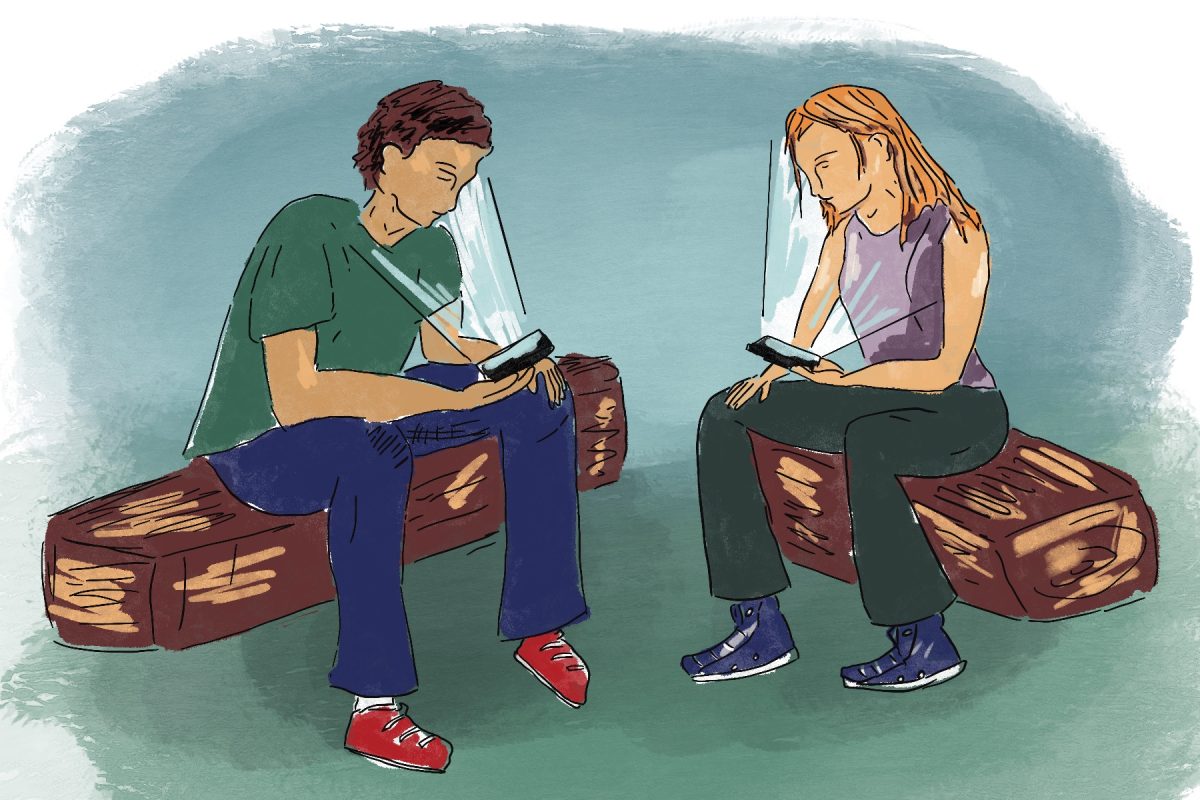Fifty-six historical markers are placed around campus. These plaques — black signs with gold or bronze text — are dedicated to significant places and people who have shaped the history of the University. Out of those 56, only five Black figures important to the University’s history are recognized; they are honored across only four plaques, a clock tower and a dedicated plaza. Three buildings on campus are also named after Black figures important to Alabama’s history.
Vivian Malone, James Hood and Autherine Lucy are the only Black former students honored in these plaques. Their plaques briefly detail the harassment they endured as the first Black students to be admitted onto campus after Brown v. Board of Education declared segregation in schools unconstitutional.
Malone and Hood’s plaques are affixed to the Autherine Lucy Clock Tower located on the Malone-Hood Plaza outside of Foster Auditorium and Lucy’s plaque is outside of Autherine Lucy Hall. A fourth plaque, nearest to the Math and Science Building, is dedicated to slaves Jack Rudolph and William “Boysey” Brown, marking where the two were buried after death. Two other buildings named after black figures are Wade Hall, named after Archie Wade, the University’s first black faculty member, and John England Hall, the dorm named after Alabama’s third black Supreme Court justice.
Kelsey France, a senior majoring in psychology, said that the plaques dedicated to these historical Black figures are a powerful reminder of success for her.
“If we work hard enough, we can get recognized, hopefully, in the future,” she said, adding that she was happy that buildings named after some of the University’s more controversial figures were replaced by the names of “people that deserve their name up there.”
Despite this, France and other students said they feel that the University still has not done enough to honor or recognize Black figures and history on campus.
France believes that race played a factor in her knowledge of the University’s history and that other kinds of students were less likely to be aware of it.
“I’ve taken African American Literature, and I took the tour for the Black historical history on campus,” said another student named Brianna Johnson, a junior majoring in nursing, referencing the Hallowed Grounds Tour. “I know about Autherine Lucy and the tunnels that were built, and that people were trying to shoot at her at Smith Hall. I know about that only because of the classes I’ve taken and my racial background.”
Noah Sims, a sophomore majoring in computer science, said that he was not very aware of the Hallowed Grounds Tour or of the plaques on campus.
“I wouldn’t be able to name any of them,” Sims said, further saying he thought the University could do more to promote its history.
Faith Lindsay, a sophomore majoring in anthropology, proposed that the University include more of its important history into a visitors’ guide rather than just a quick mention during a tour.
Joseph Angelillo, a first-year full-time instructor in legal and constitutional history, said that although he is not intimately familiar with the University’s history, he does know “about the Hallowed Grounds Project and things like different research committees and resources the University offers about its history.”
He added that while he believed the University could do more, it is already doing a lot.
In 2018, the University’s Faculty Senate established the Task Force Studying Race, Slavery and Civil Rights, a commission made up of faculty, staff and graduate students, many of whom extensively study and research the history of the University connected to race, pre- and post-1865. Their efforts continue today.
“Our current work seeks to identify and acknowledge marginalized folks who have not been widely celebrated — a task that is still very much underway,” Kaylah Morgan, an associate professor of history and member of the task force, said in a written statement.
The task force’s website also includes information about the Hallowed Grounds Project created by Hilary Green, a professor of African Studies at Davidson College. In collaboration with the UA Black Faculty and Staff Association, the task force offers guided tours led by BFSA ambassadors to anyone who RSVPs, and a self-guided virtual tour is available on the BFSA website.
Another tour involving the history of the University is the Tuscaloosa Civil Rights History Trail created by the Tuscaloosa Civil Rights History & Reconciliation Foundation, edited by associate professor of history John Giggie. The tour is self-guided, with several stops throughout Downtown Tuscaloosa.
“There is some responsibility on the students to seek this out,” Angelillo said. “Taking the time to look at the plaques, look at the landmarks, read these things and understand the history of this university surrounding race — I think it’s kind of our duty to the past.”









